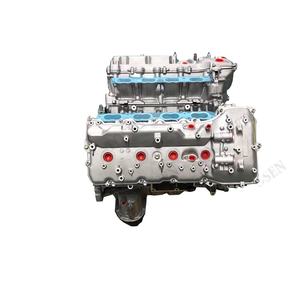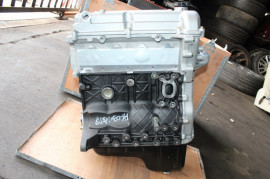Update Your Lorry with a New Opel Corsa Engine
Update Your Lorry with a New Opel Corsa Engine
Blog Article
Discovering the Inner Functions of a Compact Vehicle's Engine System
As vehicle drivers, we often take for approved the intricate processes that happen within the confines of our automobile's engine system. In this exploration of a small automobile's engine system, we will untangle the inner functions of this mechanical harmony, shedding light on the secrets that drive us ahead on our daily journeys.
Combustion Process Review
The combustion procedure in a portable car's engine system is an essential mechanism that effectively transforms fuel right into power to power the lorry. This process occurs within the burning chamber of the engine, where gas and air mix, stir up, and generate regulated explosions. The combustion procedure contains four main stages: intake, compression, power, and exhaust.
Throughout the intake phase, the piston relocates downward, reeling in a mix of air and gas right into the burning chamber. The following phase, compression, entails the piston moving upwards, compressing the air-fuel blend to enhance its effectiveness. Consequently, in the power stage, the spark plug sparks the compressed blend, causing a quick growth of gases that forces the piston pull back. This downward movement produces the power needed to drive the automobile. Lastly, in the exhaust stage, the burned gases are eliminated from the combustion chamber through the exhaust shutoff, preparing the chamber for the following cycle. This cyclic combustion procedure is basic to the operation of a small vehicle's engine system, ensuring reliable energy conversion for propulsion.
Piston and Cyndrical Tube Interaction

The piston's specific fit within the cylinder is crucial for keeping optimal compression and preventing power loss throughout combustion. Tight clearances in between the piston and cylinder walls make certain efficient securing, enabling the piston to move efficiently without allowing gases to leak past. Appropriate lubrication is additionally essential to minimize friction and put on between these elements, improving durability and performance.
Additionally, the style and products made use of in producing the piston and cylinder impact engine performance and durability. Modern engines usually employ light-weight yet durable materials like light weight aluminum alloys for pistons and cylinder linings to minimize inertia and boost thermal effectiveness. Generally, the harmonious communication between the piston and cylinder is basic to the engine's capability and general efficiency.
Gas Injection System Functionality
Gas shot systems in compact car engines play a critical duty in specifically supplying gas to the burning chamber for efficient and controlled ignition. The fuel injection system review works by injecting gas right into the burning chamber at the ideal moment during the engine's procedure (opel corsa engine). This accurate timing guarantees that the gas blends equally with the air for correct combustion, leading to boosted fuel efficiency and reduced exhausts
There are largely two kinds of fuel injection systems used in compact vehicle engines: port gas injection (PFI) and direct fuel shot (DFI) PFI systems inject fuel into the consumption port before the intake valve, while DFI systems inject fuel directly right into the combustion chamber. Both systems have their benefits, with DFI using much better fuel atomization and PFI giving a much more cost-efficient service.
Understanding Engine Air Conditioning Systems
Efficient procedure of a small lorry's engine relies greatly on the performance of its cooling mechanisms. The air conditioning system in a portable automobile generally is composed of numerous components functioning together to control the engine temperature level. Recognizing these engine air conditioning systems is crucial for keeping the performance and longevity of a small automobile's engine system.

Exhaust System Components Explained
The optimal functioning of a portable vehicle's engine cooling devices depends on a corresponding system referred to as the exhaust system, which makes up different vital components for making certain efficient discharges and engine efficiency. The exhaust system consists of parts such as the exhaust manifold, catalytic converter, muffler, and tailpipe. The exhaust next manifold gathers exhaust gases from the engine's cylinders and paths them to the catalytic converter. The catalytic converter after that transforms harmful pollutants in the exhaust into less harmful emissions before releasing them via the muffler and tailpipe.
One critical component of the exhaust system is the oxygen sensing unit, which keeps track of the oxygen degrees in the exhaust gases to aid manage fuel usage and make certain optimum engine efficiency. opel corsa engine. Furthermore, the resonator might be present in some exhaust systems to reduce noise degrees. In general, the exhaust system plays an important role in maintaining engine efficiency, reducing dangerous discharges, and making sure a quieter driving experience for small car owners

Final Thought
To conclude, the portable lorry's engine system is a complex combination of components that collaborate to help with the burning procedure, convert fuel right into energy, and remove waste gases. Comprehending the inner functions of the engine system, consisting of the piston and cylinder interaction, gas injection system, engine air conditioning systems, and exhaust system parts, is important for keeping optimum performance and efficiency of the lorry.
The combustion process in a small vehicle's engine system is a critical system that successfully converts fuel into energy to power the car.Fuel shot systems in small vehicle engines play a vital duty in precisely supplying fuel to the combustion chamber for regulated and efficient ignition.There are mostly two kinds of fuel shot systems made use of in compact lorry engines: port fuel shot (PFI) and direct fuel injection (DFI) Understanding these engine cooling systems is crucial for keeping the performance and longevity of a small car's engine system.
The optimal performance of a find more small vehicle's engine cooling mechanisms depends on a corresponding system known as the exhaust system, which comprises different vital elements for making certain reliable exhausts and engine efficiency.
Report this page